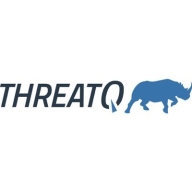

ThreatQ and GitGuardian are prominent in the cybersecurity industry. ThreatQ seems to have an upper hand in threat intelligence and incident response, whereas GitGuardian's advantage lies in code and secret scanning.
Features: ThreatQ provides advanced threat intelligence aggregation, customizable dashboards, and collaborative workflows. GitGuardian is noted for automated secret detection, real-time monitoring, and development team integration.
Ease of Deployment and Customer Service: ThreatQ offers flexible deployment options supported by effective systems, ensuring easy implementation. GitGuardian provides seamless SaaS deployment with proactive customer service for quick developer workflow integration.
Pricing and ROI: ThreatQ is more cost-effective with a steady ROI linked to its intelligence capabilities. GitGuardian requires a higher initial investment due to advanced scanning but achieves significant ROI in reducing vulnerabilities.
| Product | Market Share (%) |
|---|---|
| GitGuardian Platform | 0.6% |
| ThreatQ | 2.6% |
| Other | 96.8% |

| Company Size | Count |
|---|---|
| Small Business | 10 |
| Midsize Enterprise | 9 |
| Large Enterprise | 13 |
GitGuardian is an advanced secrets security platform that strengthens Non-Human Identity security and ensures compliance with industry standards by detecting and managing secrets in development environments.
GitGuardian integrates Secrets Security and Secrets Observability, facilitating the detection of compromised secrets and managing legitimate secrets' lifecycle. Supporting over 450 types of secrets, the platform offers public monitoring for leaked data and employs honeytokens as an added defense. Trusted by over 600,000 developers, organizations such as Snowflake and ING rely on GitGuardian for robust secrets protection.
What features define GitGuardian?
What are the key benefits when evaluating GitGuardian?
In sectors like healthcare and telecommunications, GitGuardian is implemented for detecting and managing the exposure of sensitive information in code repositories. Teams benefit from its ability to integrate with platforms such as GitHub, allowing for immediate alerts and efficient remediation of security risks, enhancing application security by safeguarding operational environments.
ThreatQ is a cybersecurity platform designed to enhance threat intelligence operations. It centralizes and manages threat data, allowing organizations to identify and respond to threats more efficiently.
ThreatQ is designed to empower security teams by personalizing threat intelligence and automation processes. It integrates with existing technologies, streamlining data collection and distribution. This promotes efficient detection, investigation, and response to security incidents, improving overall cybersecurity posture and resilience.
What are the key features of ThreatQ?ThreatQ is versatile in industries like finance and healthcare, where cybersecurity is crucial. It facilitates swift threat identification and risk management, essential for protecting sensitive data and complying with industry regulations. Its adaptability allows it to fit into diverse security architectures, making it a valuable asset across sectors.
We monitor all Threat Intelligence Platforms (TIP) reviews to prevent fraudulent reviews and keep review quality high. We do not post reviews by company employees or direct competitors. We validate each review for authenticity via cross-reference with LinkedIn, and personal follow-up with the reviewer when necessary.